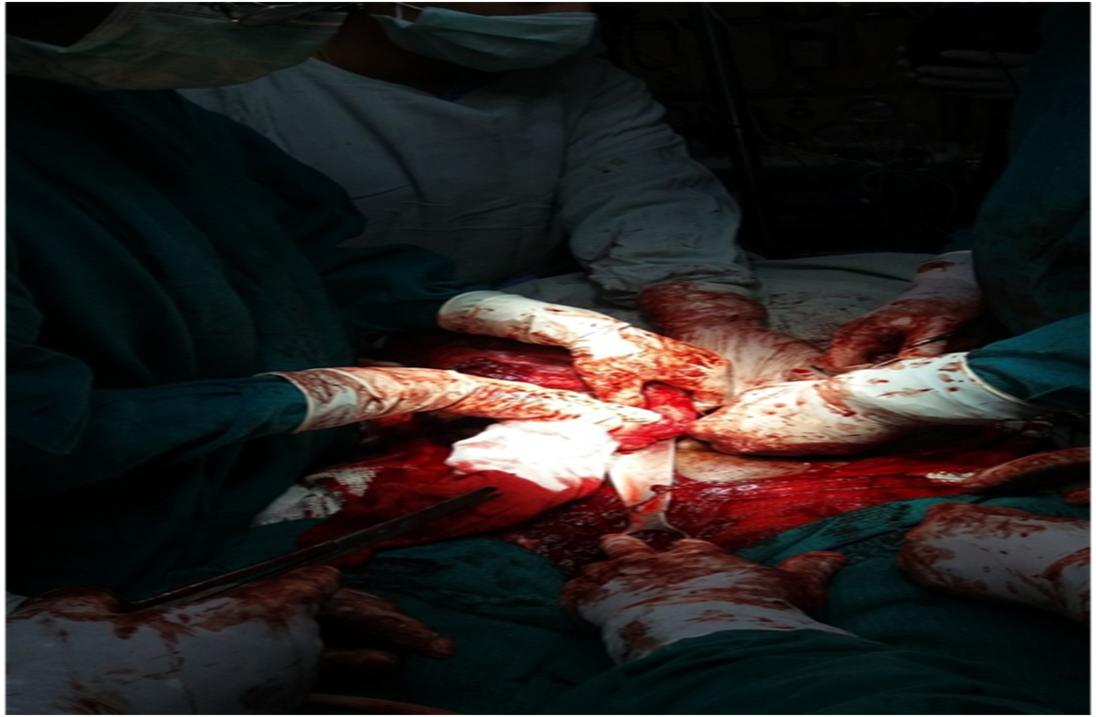
A case report of Placenta Percreta Managed by Elective Cesarean Hysterectomy
Abstract
Placenta percreta is a rare pregnancy disorder in which placenta penetrates the uterine myometrium and can invade surrounding organs. Because the rate of cesarean sections is increasing, incidence of placenta percreta is also rising. This condition significantly increases the risk of maternal and fetal morbidity and mortality, and is currently the most common indication for peripartum hysterectomy. Multidisciplinary management in a specialized center capable of providing massive transfusions can improve outcomes for the mother and the baby. The team should include experienced obstetrician, anaesthetist , urologist, vascular surgeon, blood bank team. In this report , we present a case of a patient with preoperatively diagnosed placenta percreta and discuss the relevant obstetrics and anaesthetic management methods ,diagnostic & transfusion protocols.
Full Text:
PDFReferences
Y. Oyelese and J. C. Smulian, “Placenta previa, placenta accreta, and vasa previa,” Obstetrics and Gynecology, vol. 107, no. 4, pp. 927–941, 2006. View at Publisher • View at Google Scholar • View at Scopus
M. Arduini, G. Epicoco, G. Clerici, E. Bottaccioli, S. Arena, and G. Affronti , “B-Lynch suture, intrauterine balloon, and endouterine hemostatic suture for the management of postpartum hemorrhage due to placenta previa accreta,” International Journal of Gynecology and Obstetrics, vol. 108, no. 3, pp. 191–193, 2010. View at Publisher • View at Google Scholar • View at Scopus
C. B-Lynch, A. Coker, A. H. Lawal, J. Abu, and M. J. Cowen, “The B-Lynch surgical technique for the control of massive postpartum haemorrhage: an alternative to hysterectomy? Five cases reported,” British Journal of Obstetrics and Gynaecology, vol. 104, no. 3, pp. 372–375, 1997. View at Google Scholar .View at Scopus
K. M. Flood, S. Said, M. Geary, M. Robson, C. Fitzpatrick, and F. D. Malone, “Changing trends in peripartum hysterectomy over the last 4 decades,” American Journal of Obstetrics and Gynecology, vol. 200, no. 6, pp. 632.e1–632.e6, 2009. View at Publisher • View at Google Scholar • View at Scopus
S.Wu,M. Kocherginsky, and J. U. Hibbard, “Abnormal plaentation: twenty-year analysis,” American Journal of Obstetrics and Gynecology, vol. 192, no. 5, pp. 1458–1461, 2005. View at Google Scholar • View at Scopus
W. C. Baughman, J. E. Corteville, and R. R. Shah, “Placenta accreta: spectrum of US and MR imaging findings,” Radiographics, vol. 28, no. 7, pp. 1905–1916, 2008. View at Publisher • View at Google Scholar •View at Scopus
B. K. Dwyer, V. Belogolovkin, L. Tran et al., “Prenatal diagnosis of placenta accreta: sonography or magnetic resonance imaging?” Journal of Ultrasound in Medicine, vol. 27, no. 9, pp. 1275–1281, 2008.View at Google Scholar • View at Scopus
H. A. Mousa and Z. Alfirevic, “Major postpartum hemorrhage: survey of maternity units in the United Kingdom,” Acta Obstetricia et Gynecologica Scandinavica, vol. 81, no. 8, pp. 727–730, 2002. View at Publisher • View at Google Scholar • View at Scopus
R. G. Hayman, S. Arulkumaran, and P. J. Steer, “Uterine compression sutures: surgical management of postpartum hemorrhage,” Obstetrics and Gynecology, vol. 99, no. 3, pp. 502–506, 2002. View at Publisher• View at Google Scholar • View at Scopus
J. H. Cho, H. S. Jun, and C. N. Lee, “Hemostatic suturing technique for uterine bleeding during cesarean delivery,” Obstetrics and Gynecology, vol. 96, no. 1, pp. 129–131, 2000. View at Publisher • View at Google Scholar • View at Scopus
Y. Y. Cheng, J. I. Hwang, S. W. Hung et al., “Angiographic embolization for emergent and prophylactic management of obstetric hemorrhage: a four year experience,” Journal of the Chinese Medical Association, vol. 66, no. 12, pp. 727–734, 2003. View at Google Scholar
W. L. Nelson and J. M. O'Brien, “The uterine sandwich for persistent uterine atony: combining the B-Lynch compression suture and an intrauterine Bakri balloon,” American Journal of Obstetrics and Gynecology, vol. 196, no. 5, pp. b e9–e10, 2007. View at Publisher • View at Google Scholar • View at Scopus
Refbacks
- There are currently no refbacks.

This work is licensed under a Creative Commons Attribution-NoDerivatives 4.0 International License.
An Initiative of The Tamil Nadu Dr MGR Medical University
 University Journal of Surgery and Surgical Specialities
University Journal of Surgery and Surgical Specialities